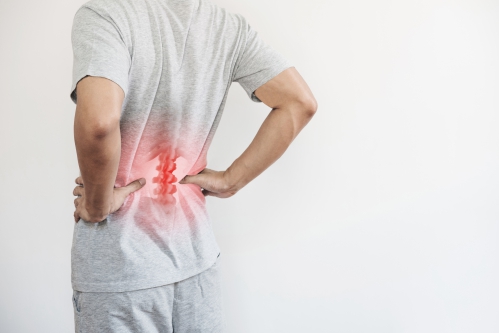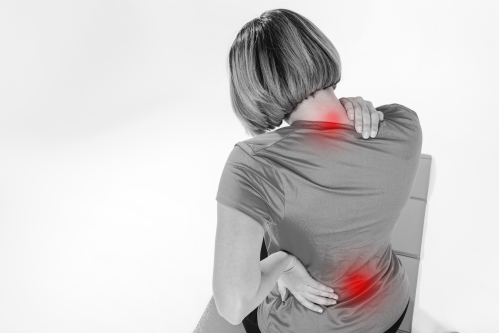Back pain, backache, sore back
Description : Back pain is one of the most common complaint, but in itself is not a condition; it is actually
Article Details :
Definition of back pain
Back pain is one of the most common complaint at the doctor’s office as almost everyone must have experienced back pain at least once in their lifetime. Also known as lumbago, back pain in itself is not a condition; it is actually more of a symptom of another underlying problem.
There are several medical conditions that may cause back pain ranging from the most nonthreatening to the most serious ones. It can arise if there is a problem with any structure found in the back namely the muscles, ligaments, nerves or the vertebral bodies (bones of the spine). It can also be due to problems in surrounding organs causing pain in the back and this is known as referred pain. Back pain can sometimes be severe enough to cause work-related disability and can require medical leaves.
Causes of back pain
Herniated disk
The spine is made up of bones stacked on one another called the vertebrae. In between each vertebrae there are disks called the intervertebral disks which act as shock absorbers and allow proper movement of the spine.
With increasing age, these disks can start to degenerate and rupture allowing all its content out. In doing so, it can compress nerves running along the spine. This condition is called disk herniation. Herniated disk can also occur in cases of trauma or impact in an otherwise healthy individual. This can be very painful and can even affect the legs if the bulge compresses a nerve than runs down the leg. This is commonly known as sciatica as it affects the sciatic nerve. The patient will feel pain in his/her leg along with a tingling sensation or numbness.
Spinal stenosis
When a person gets older, the intervertebral disks starts to lose water and decreases in size. This change, along with spinal osteoarthritis (breakdown of the bones of the spine), will cause a narrowing of the spinal column. This narrowing is called spinal stenosis. Inevitably, the narrowed spinal column will compress nerves leading to back pain.
Muscular causes
Muscular strain is a very common cause of back pain. This can be due to any injury to muscles, ligament or tendons. These structures help to support the spine. It is common to experience this type of back pain following a sudden awkward movement or by lifting a heavy object and twisting at the same time. This is why it is important to know how to properly position your body when lifting heavy objects as injuries can easily occur. Muscular strain can also result from vigorous sports or over activity. Incorrect sitting postures, being overweight, wearing high heels or lack of physical exercise can all strain your muscles.
Osteoporosis
This condition arises when there is thinning of bones in the body including the vertebrae. As this happens, your bones become weak and can easily break leading to fracture of the vertebrae. In turn, this fracture can give rise to severe pain as these are compression fractures. Falls or an impact to the back are common causes of fractures of the spine in patients having osteoporosis.
Other causes of back pain
- Scoliosis- a condition that some people have from birth where the spine is abnormally curved.
- Osteomyelitis- this is an infection in the bones and disks of the spine.
- Fibromyalgia- a condition that causes widespread muscle pain
- Pregnancy- the increase in weight during pregnancy can strain muscles in the back
- Spondylolisthesis- sliding of vertebra onto one another
- Stress- this should not be ignored as stress can lead to muscle tension
Progress of back pain
In most cases, the back pain will resolve within one month. Only about 10% of the cases will continue to have problems in the long term. In about 40% of patients the back pain will come back in the next six coming months. It is thus important to discuss about how to prevent its recurrence once the pain resolved. Your doctor will advise you about the precautionary measures to be taken if you are a patient at risk of having back pain. Weight loss will be promoted where indicated. Overall physical conditioning and back strengthening exercises will also help in the prevention.
Signs and symptoms of back pain
Since back pain can come from several causes, it is going to present in different ways including:
- Stiffness and dull ache along the spine
- Sharp or shooting pain in the lower or upper back following lifting, awkward movement or vigorous exercise
- Diminished range of motion and ability to lean forwards
- Inability to stand up straight without having lower back pain
It is advised to see a doctor as soon as possible if you experience any of the following:
- Pain in the presence of fever, frequent urination or having a burning sensation during urination as this may be a sign of an ongoing infection.
- If you feel like a tingling sensation, weakness or numbness in your legs, arms or groin area, you should seek medical attention immediately. This can be indicating damage to the Read more




